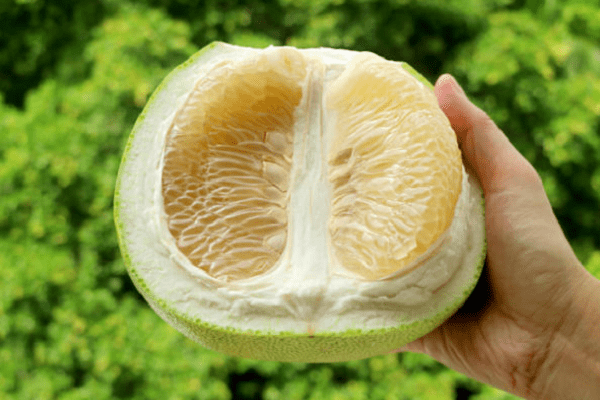Healthy food >>>> Pompelmus fruit - what is it?
Pompelmus fruit - what is it?

Everyone is familiar with the name Grapefruit, but not everyone knows that the botanical name of Grapefruit is Pompelmus grapefruit. This plant is not from the wild. This is the closest relative of Pompelmus, from which it received the name Pompelmus grape-shaped. But this name did not take root in colloquial speech and literature only because of the difficulty of pronouncing the word Pompelmus. In fact, Grapefruit fruits belong to the Citrus genus, generalized by the name Pompelmus. Grapefruit is called Pompelmus grapefruit because its fruits, unlike its peers, grow in clusters on the branches. But there is another type of Citrus fruit of the same genus as Grapefruit, known as Pomelo - these are the fruits of the real Pompelmus .
Pompelmus grows as single fruits and bears little resemblance to Grapefruit, as it has a thicker skin, a peculiar cotton-like stroma, and a fruit that is significantly smaller than the size of this fruit in the skin. At their core, Pompelmus (Pomelo) and Grapefruit are the fruits of different trees, but one common genus in the Citrus family. The ancestor is Pompelmus (Pomelo), a tree known since ancient times. And Grapefruit is considered a derivative of Pompelmus (Pomelo) - a hybrid of Pomelo and Orange. In some cases, Grapefruit is called Indian Orange. The names of both fruits have different linguistic origins: the Dutch "Pompelmus" and the English "Grapefruit".
Pompelmus has a succession of hybrids, Grapefruit is not the last hybrid from Pompelmus - there is a hybrid of Grapefruit and tangerine called Tangelo. From hybrid to hybrid, the taste of the fruit changes in favor of the sweeter fruits with which they are crossed. In this way, both the structure and appearance of Pompelmus fruits change.


Apart from the generic name, there is little in common between the appearance and taste of Pomelo (Pompelmus) and Grapefruit - both fruits are large in size and endowed with a bitter aftertaste of the pulp. Otherwise, the fruits of these plants are distinguished by the color, shape and internal structure of the fruits themselves.
For nutrition, the fruits of both plants have the same value - they have a wide range of microelements, unlike other types of Citrus fruits, contain B vitamins, have the properties of toning the body and adding energy and vitality.
Unlike Grapefruit, Pompelmus has a sweeter pulp taste closer to the taste of orange. But the hybridization of Pompelmus and its transformation into Grapefruit led to obvious improvements in the commercial qualities of plants of this genus. Since Pompelmus fruits, despite their size (in the skin), lose half their volume when peeled. When buying Pompelmus fruits, you should not count on the size of the fruit in the skin. Peeling will yield a volume of fruit with pulp equal to the size of a tangerine. This fact disappoints many Pompelmus (Pomelo) buyers. Whereas the size of Grapefruit after peeling practically does not change in volume, since the skin of Grapefruit is quite thin, and the thickness of the connective stroma is minimal.


The taste of Pompelmus fruit is more suitable for nutrition, which has the taste of an orange or tangerine, depending on the variety. Grapefruit is not so pleasant to the taste, and it is quite difficult to eat it as an independent fruit (like orange, tangerine and other citrus fruits) due to its pronounced bitterness. But Grapefruit fruits are indispensable in dishes that require the presence of citrus components - they add a special taste to meat, fish, seafood, as well as other fruits and vegetables with which they are combined.
Pompelmus fruits are well stored after harvest due to the nutrients stored in the tissues surrounding the inner fruit - the fleshy stroma. When stored for about two to three months, the fruits of the Pompelmus plant reach their best taste. Grapefruit fruits do not have such persistent qualities, but even after harvest they are kept for some time.
Unlike Grapefruit, Pompelmus is completely harmless in nutrition. But substances contained in the pulp and juice of Grapefruit can form active compounds with medications and have adverse effects on the liver. It follows that eating Grapefruit pulp or drinking Grapefruit juice is unsafe in combination with medications. This is done separately, setting a time interval in the range of 2-4 hours between consuming Grapefruit and taking medications.
The fruits of Pompelmus and its hybrids are considered dietary and preventive fruits from the Citrus family. Which of the fruits of these plants to choose for food is a matter of personal taste.

Read

Read



























